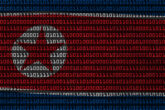October 03, 2017
The Uses and Misuses of Historical Analogy for North Korea
Amid a steady fusillade of ever more capable rockets from North Korea, and an escalating volley of threats and insults flying between Washington and Pyongyang, the crisis in Northeast Asia shows no sign of slackening. On the contrary, as North Korea’s drive for a nuclear-armed ballistic missile accelerates, Washington is racing to innovate creative new sanctions to strangle the Hermit Kingdom’s economy, and to develop unconventional military options that could stymie Kim Jong Un’s weapons programs without provoking a cataclysm.
But Pyongyang’s worsening provocations have also set off another kind of intellectual arms race among foreign-policy thinkers: the search for the perfect historical analogy that can pierce the fog surrounding the present crisis.
For Harvard professor Graham Allison, the North Korean affair represents a Cuban Missile Crisis in slow motion. Scholar Robert Litwak agrees—but also invokes 1914 Europe and the tinderbox that sparked a world war. Former UN Ambassador John Bolton argues that the right comparison for Kim’s behavior is to Nazi naval threats in 1941, while according to The Atlantic’s Peter Beinart, Washington should look to Ronald Reagan’s diplomacy with Mikhail Gorbachev as a model for persuading Xi Jinping to help America against Pyongyang. Other observers have sought lessons about the North Korean crisis from Stalin and Mao’s development of nuclear weapons, while for still others the better analogue is the U.S. push under the Obama administration to curtail Iran’s nuclear activities—and the solution, an Iranian-style nuclear deal.
Read the full op-ed in The Atlantic.
More from CNAS
-
Assessing the Terror Threat Landscape in South and Central Asia and Examining Opportunities for Cooperation
Watch...
By Lisa Curtis
-
Indo-Pacific Security / Energy, Economics & Security
What Will North Korean Cybercrime Look Like in 2022?North Korean hackers will likely continue to employ more phishing campaigns in the future while tailoring their level of obfuscation based on the target’s sophistication....
By Jason Bartlett
-
Duyeon Kim testifies before European Parliament's Committee on Foreign Affairs
Chairman McAllister, Vice Chairs, DKOR Chairman Mandl, and distinguished Members of the Committee on Foreign Affairs and the European Parliament, thank you for the opportunity...
By Dr. Duyeon Kim
-
China’s New Land Borders Law Is a Nightmare for North Korean Refugees
A combination of high-level pressure from foreign governments and steady support for grassroots refugee resettlement organizations and programs is the most practical way to as...
By Jason Bartlett


